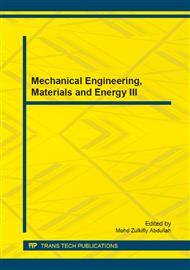p.92
p.96
p.100
p.105
p.110
p.115
p.119
p.124
p.130
Effect of Near β Heat Treatment Process on Microstructure of TC18 Alloy
Abstract:
The effects of near β heat treatment on the microstructure of TC18 alloy during three temperature stages were studied. The results show that the microstructure of the sample is tri-modal microstructure after near β heat treatment, and the size of αp does not significantly, but dispersible αs increases and has a tendency to merge, and then it would not grow up anymore ; β phase would grow up, but the grain boundary has some broken. The experiment result shows that the tri-modal microstructure could obtain high damage tolerance properties of titanium alloy in theory.
Info:
Periodical:
Pages:
110-114
Citation:
Online since:
December 2013
Authors:
Keywords:
Price:
Сopyright:
© 2014 Trans Tech Publications Ltd. All Rights Reserved
Share:
Citation:


